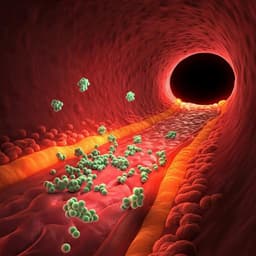Introduction
Industrial emissions of gases like CO, CO2, N2, and H2 represent significant resources for sustainable chemical and energy conversion. Biocatalysts offer a green approach to utilizing these gases from industrial flue gases, operating efficiently under mild conditions. The steel industry, for example, generates massive amounts of CO and CO2 waste gases annually. Enzymatic waste gas conversion presents an attractive alternative, bypassing the need for gas capture or pretreatment and avoiding inhibition by contaminants often present in industrial gas mixtures. CO and CO2 in steel flue gases can be readily processed by CODH and formate dehydrogenase (FDH), respectively. Electron mediators are essential for the redox reactions involved in enzymatic gas conversion. However, many gas-utilizing enzymes rely on strain-specific electron carriers, limiting their in-vitro applications. Viologens, with their three reversible redox states, offer a universal and readily applicable alternative for various metalloenzymes, including CODH and FDH. While viologen-based enzymatic conversion of CO or CO2 shows promise, the underlying interactions between these mediators and metalloenzymes remain poorly understood. Ni-Fe CODHs, with their well-characterized [NiFe4S4OHx] cluster and available high-resolution structural information, serve as ideal model enzymes for studying viologen mediator interaction. Prior work highlighted the importance of oxygen tolerance and efficient mediator interaction for industrial bioconversion of syngas mixtures. This study focuses on addressing the latter, investigating the interaction between viologens and Ni-Fe CODHs.
Literature Review
Numerous studies have highlighted the potential of biocatalysis for sustainable chemical and energy conversion using industrial waste gases. The use of CODHs and FDHs for CO and CO2 conversion, respectively, has been extensively explored. Research has also focused on the challenges associated with electron transfer in these systems, particularly the limitations imposed by native electron carriers. Viologens have emerged as promising artificial electron mediators due to their versatility and ease of application. Several publications demonstrate their effectiveness in various in-vitro electrochemical and photochemical redox systems. While the catalytic activity of CODHs with viologens has been documented, a detailed understanding of the interaction sites and mechanisms remains lacking. High-resolution structural information of Ni-Fe CODHs has provided a foundation for understanding their catalytic mechanisms; however, the specific interactions with viologens have not been thoroughly investigated. Existing literature emphasizes the need for oxygen-tolerant and highly efficient CODHs for practical industrial applications; this study builds upon this foundation by focusing on understanding and optimizing the interaction with electron mediators.
Methodology
This research employed a systematic approach to identify the viologen interaction site in ChCODH2. The study began by analyzing the surface-exposed aromatic residues (phenylalanine (F), tyrosine (Y), and tryptophan (W)) in the ChCODH2 structure (PDB ID: 1SU7), as these residues are known to facilitate electron transfer. Alanine substitutions were made at these surface residues, and the resulting variants were assessed for their activity using ethyl viologen (EV) as an electron acceptor. The impact of these substitutions on enzyme activity was measured to pinpoint crucial residues for mediator interaction. Further investigation focused on residues near F41, identified as a key residue. Variants with mutations at positions R57 and N59 were created and characterized to determine their effect on EV interaction and affinity. Isothermal titration calorimetry (ITC) was utilized to quantitatively determine the binding affinities of wild-type and mutant CODHs for EV. Crystal structures of the wild-type and engineered variants, both with and without viologens (EV and benzyl viologen (BV)), were determined to understand the structural basis of the observed changes in affinity and activity. Electrochemical techniques, such as cyclic voltammetry (CV), were employed to examine the redox properties of the enzyme variants and assess whether mutations affected the redox potential of the D-cluster. Finally, the engineered variants were tested using real industrial waste gas mixtures containing CO to evaluate their performance in practical settings. Gas chromatography was used to quantify gas components before and after the enzymatic reactions.
Key Findings
Alanine scanning mutagenesis revealed that F41 is crucial for viologen reduction, with its substitution resulting in a dramatic loss of activity. This residue's importance was validated across different viologen types and in other CODH enzymes (RrCODH and DvCODH). Further analysis focused on residues near F41, leading to the identification of R57 and N59 as important for EV interaction. The R57G/N59L double mutant exhibited a ten-fold increase in EV affinity (*Km* ≈ 0.2 mM) compared to the wild type (Km = 2.3mM), without sacrificing the catalytic rate (*kcat* = 2100 s⁻¹). ITC analysis confirmed the increased binding affinity of the R57G/N59L mutant for EV (Kd = 144 µM) compared to the wild type (Kd = 449 µM). Crystal structures of the R57G/N59L variant complexed with EV and BV revealed that the viologens bind near F41, interacting with residues such as E43, T44, L583, and L612. The distance between the viologens and the F41 residue or the Fe-S clusters was within the range of electron transfer distances. Mutations at E43, introducing positively charged residues, resulted in a decreased affinity for EV, indicating the importance of electrostatic interactions between E43 and the viologen. The R57G/N59L/A559W triple mutant displayed high catalytic efficiency and oxygen tolerance, demonstrating its potential for application in real waste gas treatment. This triple mutant exhibited high activity against a range of real industrial waste gases (COG, BFG, LDG, SRF-derived gas), demonstrating its versatility in handling various gas mixtures.
Discussion
The results demonstrate the crucial role of F41 as a key residue mediating electron transfer from the D-cluster to viologens in CODH. The engineered variants with increased EV affinity show significantly improved catalytic efficiency, especially in the context of industrial applications. The findings suggest a dual electron transfer pathway involving both F41 and the D-cluster. The importance of electrostatic interactions between E43 and the viologen was highlighted, providing insights into the specific nature of the protein-ligand interactions. The successful application of the engineered variants to real waste gases underscores the practical implications of the study. The study provides a method for identifying mediator interaction sites in other metalloenzymes by searching for surface-exposed aromatic residues and analyzing their proximity to electron transfer clusters, expanding its applicability beyond CODH.
Conclusion
This research established a rational approach for identifying and optimizing the electron mediator interaction site in Ni-Fe CODHs. The engineered R57G/N59L variant displays significantly enhanced EV affinity without compromising catalytic activity. The R57G/N59L/A559W variant demonstrates robust performance in treating a broad spectrum of real industrial waste gases. Structural analysis revealed the mechanism of electron transfer, highlighting the role of surface phenylalanine residues. This study offers valuable insights for designing and customizing highly efficient biocatalysts for industrial gas conversion and other similar metalloenzymes.
Limitations
While the study successfully identified key residues for viologen interaction and created improved CODH variants, further research is needed to fully elucidate the complex electron transfer mechanisms within CODH. The study primarily focused on EV; testing with other mediators would broaden understanding of the interaction mechanism. The influence of other factors, such as pH and temperature, on mediator interaction should also be investigated. The scalability of the engineered variants to industrial settings needs further investigation. The role of PEG in crystal structure determination and its potential influence on the observed viologen binding needs more detailed analysis.
Related Publications
Explore these studies to deepen your understanding of the subject.







